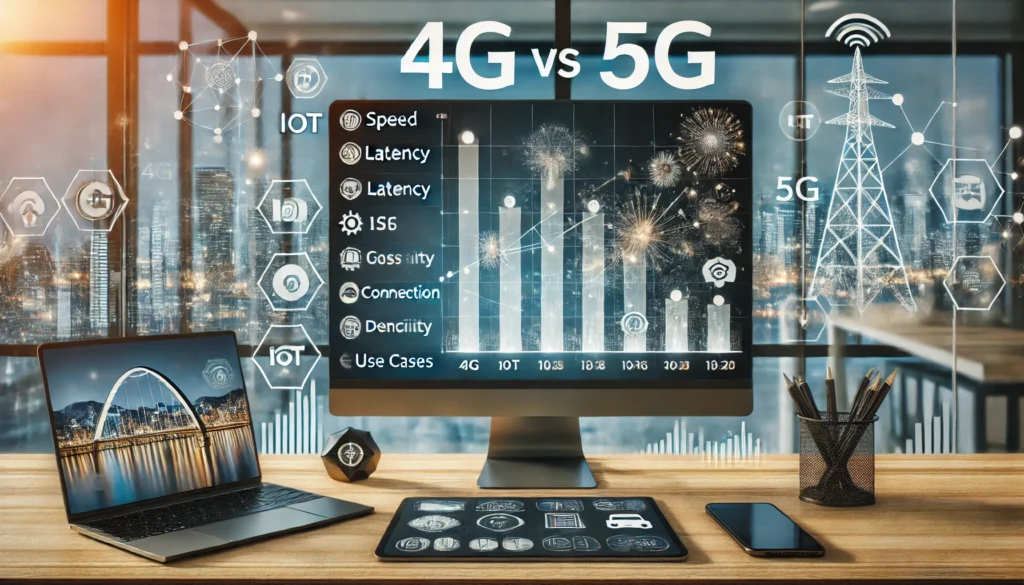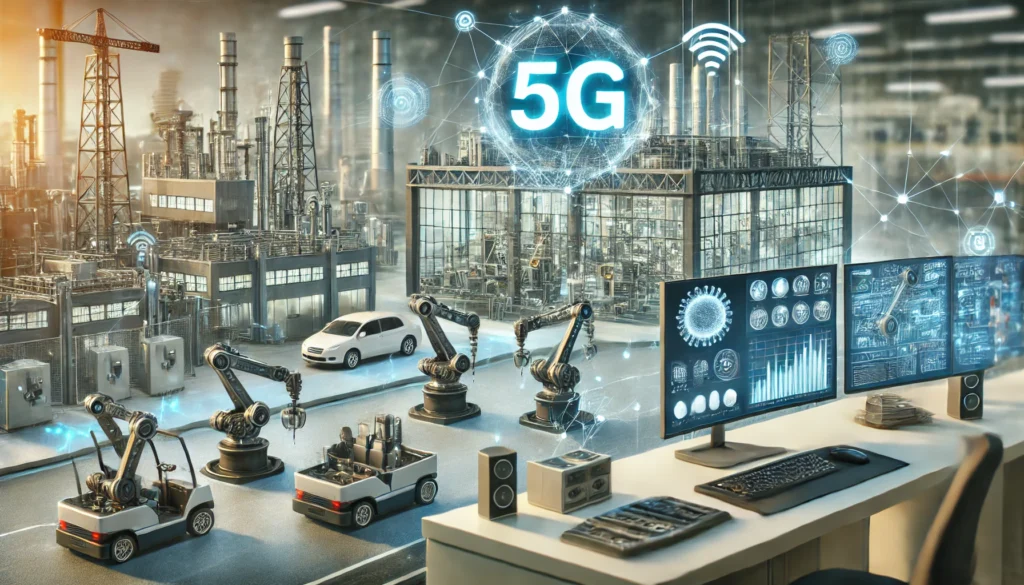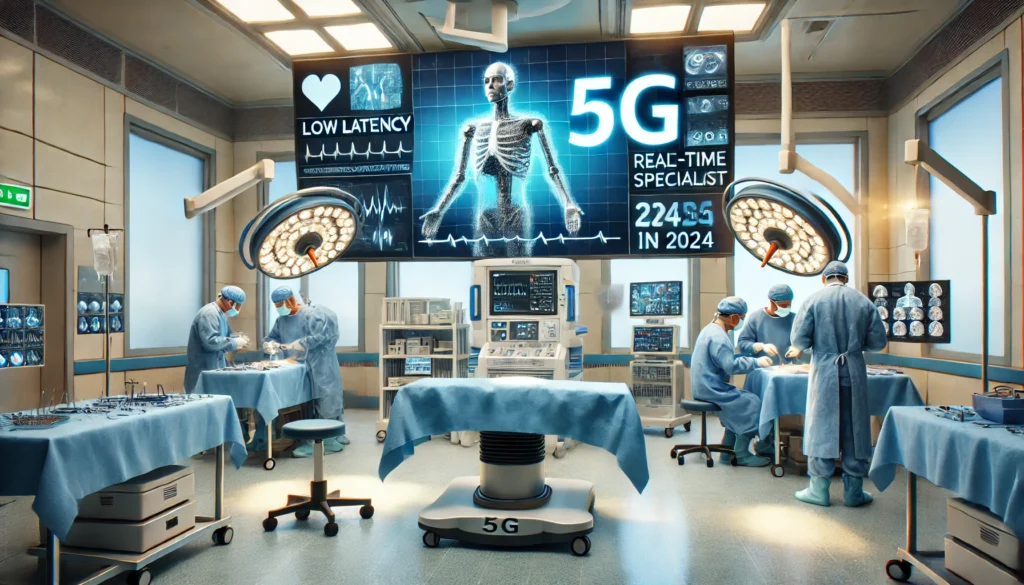Introduction
The rise of 5G technology has been one of the most significant technological developments in recent years. As we head into 2024, 5G is becoming increasingly widespread, promising faster speeds, lower latency, and more reliable internet connections. This next-generation network is not just about making mobile browsing faster—it’s about transforming industries, enabling smart cities, enhancing virtual experiences, and changing how we connect with the world.
In this article, we’ll explore the advancements in 5G technology in 2024, what sets it apart from previous generations, and why it’s going to play a major role in shaping the future of communication.
What is 5G Technology?
5G technology is the fifth generation of mobile networks, designed to replace the previous 4G LTE standard. It offers significantly faster data speeds, lower latency (the time it takes for data to travel), and greater capacity to handle multiple devices simultaneously. In essence, 5G aims to support the growing number of devices that connect to the internet, such as smartphones, smart home devices, and even autonomous vehicles.

With 5G technology, users can download movies in seconds, enjoy smooth video streaming, and engage in high-definition video calls without interruptions. Businesses can also benefit from improved efficiency and automation thanks to the network’s ability to support machine-to-machine communication, artificial intelligence, and the Internet of Things (IoT).Secondary Keyword: 5G network, mobile network technology.
How Does 5G Work?
5G technology operates on higher frequency bands than previous generations. This allows it to transmit data faster, but it also means that 5G networks have shorter ranges compared to 4G. To compensate, 5G uses a combination of small cells, macrocells, and millimeter-wave spectrum to ensure strong coverage in both urban and rural areas.
One of the key innovations behind 5G technology is massive MIMO (Multiple Input Multiple Output), which enables multiple antennas to transmit and receive signals at the same time. This increases network capacity and reduces latency, making 5G ideal for applications like gaming, virtual reality (VR), and real-time video conferencing.
Benefits of 5G Technology in 2024
1. Faster Data Speeds
One of the most talked-about advantages of 5G technology is its ultra-fast speeds. Compared to 4G, 5G can reach speeds of up to 10 Gbps, which is 100 times faster than the average 4G network. This speed revolutionizes how we use the internet, making it easier to stream 4K videos, download large files instantly, and play high-resolution online games without lag.
2. Lower Latency
Latency refers to the time it takes for data to travel between devices. With 5G technology, latency can be as low as 1 millisecond, making it virtually instant. This is especially important for applications that require real-time responsiveness, such as self-driving cars, robotic surgery, and online gaming.
3. Increased Connectivity
Another major benefit of 5G is its ability to handle more devices at once. In today’s world, we have more connected devices than ever before, from smartphones and laptops to smart home gadgets and wearable tech. 5G technology supports up to one million devices per square kilometer, ensuring smooth connectivity even in crowded places like concerts, stadiums, and city centers.

4. Enhanced Virtual and Augmented Reality
As 5G networks become more widespread, we’ll see a rise in applications that utilize virtual reality (VR) and augmented reality (AR). Whether it’s immersive gaming experiences, remote training sessions, or virtual tourism, 5G technology makes these experiences more seamless and lifelike, thanks to its low latency and high data transfer rates.
5. Smart Cities and IoT
The increased connectivity offered by 5G technology will play a crucial role in the development of smart cities and the Internet of Things (IoT). With more devices connected to the internet, cities can implement smart traffic systems, waste management, and energy-efficient grids that communicate in real time. This level of connectivity enables more sustainable, efficient urban living.
Comparison Table: 5G vs 4G Technology
| Feature | 5G Technology | 4G Technology |
|---|---|---|
| Speed | Up to 10 Gbps | Up to 100 Mbps |
| Latency | 1 millisecond or lower | 50 milliseconds |
| Connection Density | 1 million devices per square kilometer | 100,000 devices per square kilometer |
| Use Cases | IoT, VR, AR, autonomous vehicles, smart cities | Streaming, browsing, video calls |
| Energy Efficiency | High | Moderate |
| Deployment | Rolling out worldwide | Already widely available |
Applications of 5G Technology in 2024
1. Autonomous Vehicles
One of the most exciting applications of 5G technology is in autonomous vehicles. Self-driving cars require real-time data to navigate roads, avoid obstacles, and communicate with other vehicles. With its ultra-low latency and reliable connectivity, 5G enables these vehicles to operate more safely and efficiently.
2. Telemedicine
In the healthcare sector, technology is set to revolutionize telemedicine and remote surgery. With high-speed, low-latency connections, doctors can perform remote diagnoses and even assist in surgeries from across the globe. This will make healthcare more accessible, particularly in rural or underserved areas.
3. Smart Manufacturing
Factories of the future will be powered by 5G networks, enabling real-time monitoring and automation of machines. With 5G, manufacturers can use connected robots, automated systems, and AI-powered analytics to improve production efficiency and reduce downtime. This is what’s referred to as the Industrial Internet of Things (IIoT).
4. Enhanced Entertainment Experiences

Thanks to 5G technology, we can expect richer, more interactive experiences in entertainment. This includes VR gaming, 360-degree live sports broadcasts, and immersive online concerts. With its fast speeds and ability to handle high data volumes, 5G will change how we experience media and entertainment.
Challenges and Limitations of 5G Technology
While 5G technology offers numerous advantages, there are still some challenges and limitations that need to be addressed in 2024:
1. Infrastructure Rollout
The deployment of 5G networks requires a significant infrastructure investment, including the installation of small cells and antennas across cities. While 5G is rolling out rapidly in urban areas, rural regions may still face delays in accessing the network.
2. Device Compatibility
To take full advantage , users need 5G-compatible devices. While many new smartphones and gadgets are 5G-ready, older devices will not be able to connect to 5G networks. This means users may need to upgrade their hardware.
3. Security Concerns
As with any new technology, 5G brings with it security risks. The increased number of connected devices in a 5G network opens the door for more potential cyberattacks. Ensuring robust security measures are in place will be essential to protecting sensitive data.
Conclusion
5G technology is set to transform the way we live, work, and communicate. With its unparalleled speed, ultra-low latency, and ability to connect millions of devices, 5G will play a crucial role in powering everything from autonomous vehicles and smart cities to immersive virtual experiences.
As we move further into 2024, we’ll see more applications of technology in industries such as healthcare, manufacturing, and entertainment. However, there are still challenges to overcome, such as infrastructure development and security concerns. Nonetheless, the future of 5G is bright, and it will continue to drive innovation and connectivity in the years to come.
Frequently Asked Questions (FAQ)
- What is the difference between 4G and 5G technology?
- The key differences between 4G and 5G are speed and latency. 5G technology offers speeds up to 10 Gbps, which is 100 times faster than 4G, and its latency can be as low as 1 millisecond, making it ideal for real-time applications like VR and autonomous vehicles.
- How fast is 5G compared to 4G?
- 5G is up to 100 times faster than 4G, with speeds reaching up to 10 Gbps, while 4G typically provides speeds of up to 100 Mbps.
- What are the benefits of 5G technology?
- The main benefits of 5G technology include faster data speeds, lower latency, the ability to connect more devices simultaneously, and support for advanced applications like autonomous vehicles, telemedicine, and smart cities.
- When will 5G be widely available?
- 5G technology is being rolled out across the globe, with major cities already having access. By the end of 2024, it is expected that most urban areas will have widespread